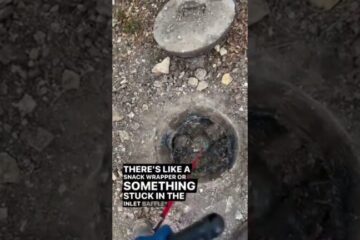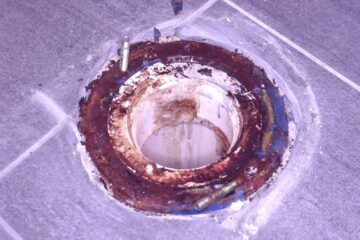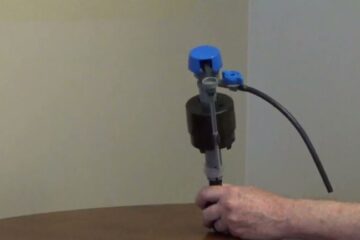In this article, you will discover practical and effortless methods to safeguard your outside faucet from freezing during the frigid winter months. The freezing temperatures can not only cause inconvenience but also result in costly damage to your plumbing system. By implementing these simple yet effective strategies, you will ensure that your outside faucet remains functional and protected throughout the winter season.
Insulate the Faucet
One of the most effective ways to prevent your outside faucet from freezing is to insulate it. This provides an extra layer of protection against cold temperatures and reduces the risk of freezing. There are several methods you can use to insulate your faucet.
Wrap the Faucet with Insulating Tape
Insulating tape is a cost-effective and easy option to protect your faucet. It is specifically designed to provide insulation and prevent freezing. You can wrap the tape tightly around the faucet, ensuring all exposed parts are covered. This tape acts as a barrier, keeping the cold air away from the faucet and helping to maintain a consistent temperature.
Cover the Faucet with an Insulated Cover
Another effective method of insulation is to use an insulated cover. These covers are designed to fit over the faucet and provide an extra layer of protection against the cold. They are typically made of durable materials that can withstand harsh weather conditions. Insulated covers are easy to install and remove, making them a convenient option for winterizing your outside faucet.
Use a Styrofoam Cup as a Temporary Insulator
If you need a quick and temporary solution for insulation, you can use a styrofoam cup. Simply cut a hole in the bottom of the cup, large enough to fit over the faucet. Slide the cup over the faucet, ensuring it covers the entire exposed area. The styrofoam acts as an insulator, preventing the cold from reaching the faucet and reducing the risk of freezing. This method is ideal for situations where insulation is needed immediately but can be replaced with a more long-term solution later on.
Drain the Faucet
Draining the faucet is another crucial step in preventing freezing during the winter months. By removing any remaining water from the system, you eliminate the chance of it freezing and causing damage to the pipes.
Turn Off the Water Supply to the Faucet
Before you begin draining the faucet, it is essential to turn off the water supply. Locate the shut-off valve that controls the water flow to the outside faucet and close it. This prevents any additional water from entering the system while you work on draining it.
Open the Outdoor Faucet to Drain Any Remaining Water
Once the water supply is shut off, open the outdoor faucet to allow any remaining water to drain out. This can be done by turning the faucet handle counterclockwise until it is fully open. By doing this, you create an open pathway for the water to flow out of the system, reducing the risk of freezing.
Leave the Faucet Open to Allow Air Circulation
After draining the faucet, it is crucial to leave it open to allow for proper air circulation. This prevents any trapped moisture from causing freezing issues. Leaving the faucet open also relieves any pressure on the system, which can further reduce the risk of freezing.
Install a Frost-Proof Faucet
For a long-term solution to prevent freezing, consider installing a frost-proof faucet. Frost-proof faucets are designed to prevent freezing by shutting off the water supply inside the house, eliminating the risk of water freezing in the exposed portion of the faucet.
Replace the Outdoor Faucet with a Frost-Proof Model
To install a frost-proof faucet, you will need to replace your existing outdoor faucet with a frost-proof model. Frost-proof faucets are specifically designed to withstand freezing temperatures and prevent damage to the pipes. The installation process may require professional assistance, especially if you are not familiar with plumbing work.
Hire a Professional Plumber for Installation
Due to the intricacies involved in installing a frost-proof faucet, it is highly recommended to hire a professional plumber for the job. They have the expertise and experience to ensure the installation is done correctly and efficiently. A professional plumber can also provide guidance on proper insulation techniques to enhance the faucet’s protection against freezing.
Ensure Proper Insulation Around the New Faucet
After the frost-proof faucet is installed, it is crucial to ensure proper insulation around it. Use insulating tape or covers specifically designed for frost-proof faucets to provide an additional layer of protection. Proper insulation will help maintain a consistent temperature around the faucet and minimize the risk of freezing.
Install a Heat Tape
Heat tape is another effective method to prevent freezing of your outside faucet. It uses electrical heating elements to generate heat and keep the faucet warm during cold temperatures.
Choose a Heat Tape Suitable for Outdoor Use
When selecting a heat tape, ensure that it is suitable for outdoor use. Outdoor-rated heat tapes are designed to withstand various weather conditions and provide reliable heat to prevent freezing. Check the manufacturer’s specifications to ensure the heat tape is compatible with your faucet and the outdoor environment.
Wrap the Heat Tape Around the Faucet and Insulate It
To install the heat tape, wrap it tightly around the faucet, ensuring it covers all exposed parts. Secure the tape with electrical tape or zip ties to keep it in place. Additionally, insulate the heat tape by wrapping it with insulating tape or covers. This will help retain the generated heat and provide extra insulation against freezing temperatures.
Plug in the Heat Tape as Directed by the Manufacturer
After properly installing and insulating the heat tape, plug it into a grounded electrical outlet as directed by the manufacturer’s instructions. Follow all safety precautions and guidelines provided by the manufacturer to prevent any electrical hazards or malfunctions. Regularly inspect the heat tape to ensure it is functioning correctly throughout the winter season.
Use a Faucet Sock
A faucet sock is a simple yet effective solution for protecting your outside faucet from freezing. It provides insulation and helps maintain a consistent temperature around the faucet.
Slide a Faucet Sock Over the Outdoor Faucet
To use a faucet sock, slide it over the outdoor faucet, ensuring it covers the entire exposed area. The sock is typically made of insulating materials such as neoprene or foam, which provide excellent protection against freezing temperatures. The snug fit of the sock helps retain heat and prevents cold air from reaching the faucet.
Secure the Sock in Place with Velcro or Straps
Once the faucet sock is in place, secure it tightly to prevent it from slipping off. Some faucet socks come with Velcro straps or adjustable straps that can be tightened to ensure a secure fit. This prevents the sock from getting displaced by wind or other external factors, maintaining its effectiveness in preventing freezing.
Ensure the Sock Covers the Entire Faucet
When installing a faucet sock, it is crucial to ensure that it covers the entire faucet adequately. This includes the handle, spout, and any other exposed parts. The goal is to provide complete coverage and insulation to prevent freezing. Regularly check the sock to ensure it is still in place and has not become damaged or torn.
Apply Heat Source
Applying a heat source near the outdoor faucet can help keep it warm and prevent freezing. However, it is essential to follow proper safety precautions when using heat sources.
Use a Heat Lamp to Keep the Faucet Warm
One way to provide heat to the outdoor faucet is by using a heat lamp. Heat lamps emit a steady stream of heat that can be directed towards the faucet, preventing freezing. Place the heat lamp in a safe position, ensuring it does not come into contact with any flammable materials or objects.
Position the Heat Lamp at a Safe Distance
When positioning the heat lamp, ensure it is at a safe distance from the faucet to avoid any damage. Follow the manufacturer’s instructions on the recommended distance for optimal heat distribution. Regularly inspect the heat lamp to ensure it is functioning correctly and not posing any fire hazards.
Always Monitor the Heat Source to Prevent Accidents
It is crucial to monitor the heat source regularly to prevent any accidents. Keep an eye on the heat lamp and ensure it remains stable and secure. Do not leave the heat source unattended for extended periods or overnight. If necessary, set up a timer to automatically turn the heat source off after a certain period to avoid overheating or electrical issues.
Keep Cabinet Doors Open
To prevent freezing in the water lines leading to the outdoor faucet, it is important to allow warm air from the house to reach those pipes.
Open Cabinet Doors Underneath Sink with Outdoor Faucet
Open the cabinet doors underneath the sink that houses the outdoor faucet. This will allow warm air from the surrounding environment to circulate around the water lines. The warmer air helps maintain a higher temperature in the pipes, reducing the risk of freezing.
Allow Warm Air from the House to Reach the Pipes
By keeping the cabinet doors open, you create a pathway for warm air from the house to reach the pipes leading to the outdoor faucet. This warm air circulation helps prevent freezing and ensures a constant temperature in the water lines, even during cold weather conditions.
Ensure the Faucet Is Close Enough to Benefit from the Heat
When opening the cabinet doors, ensure that the outdoor faucet is close enough to benefit from the warm air circulation. If the faucet is too far away, the effect of the warm air may be diminished. Consider rearranging items stored in the cabinet to allow for better airflow around the water lines.
Use a Space Heater
A space heater can be an effective heat source to prevent freezing in the outdoor faucet. However, caution must be exercised when using a space heater.
Place a Space Heater Near the Outdoor Faucet
Position a space heater near the outdoor faucet to provide a continuous flow of warm air. Ensure that the space heater is placed in a safe and stable location, away from any flammable materials or objects. Always follow the manufacturer’s instructions on the recommended distance and settings for outdoor use.
Ensure the Heater Is Rated for Outdoor Use
Before using a space heater near the outdoor faucet, verify that it is specifically designed for outdoor use. Indoor space heaters may not be able to withstand outdoor elements and can pose safety hazards. Outdoor-rated space heaters are designed to withstand various weather conditions and provide optimal performance.
Follow All Safety Precautions and Manufacturer’s Instructions
When using a space heater, always prioritize safety. Read and follow all safety precautions provided by the manufacturer. This includes recommendations on proper placement, maintenance, and usage. Regularly inspect the space heater for any signs of damage or malfunctions to ensure safe and efficient operation.
Bury the Water Line Deeper
Burying the water line deeper can provide added insulation and protection against freezing. This involves digging a trench, lowering the water line below the frost line, and properly insulating the area.
Dig a Trench to Access the Water Line
To bury the water line deeper, start by digging a trench along the path of the existing water line. The trench should be deep enough to reach below the frost line, which is the depth at which the ground freezes during winter. Take necessary precautions and use appropriate tools to safely dig the trench.
Lower the Water Line Below the Frost Line
Once the trench is dug, carefully lower the water line, ensuring it is below the frost line. This prevents exposure to freezing temperatures and reduces the risk of the water inside the line freezing. It is essential to maintain a slight slope in the water line to ensure proper drainage.
Backfill the Trench and Insulate Above the Water Line
After lowering the water line, backfill the trench with soil, ensuring it is compacted properly. Additionally, insulate the portion of the trench above the water line to provide added protection against freezing temperatures. This can be done using insulating materials such as foam board insulation or insulating tape specifically designed for buried water lines.
Install a Shut-Off Valve Inside
Installing a shut-off valve inside is a convenient way to prevent freezing as it allows you to control the water flow to the outdoor faucet and drain it easily.
Locate the Pipe Connected to the Outdoor Faucet
Identify the indoor pipe that connects to the outdoor faucet. This is usually located in a basement or utility room. Locate a suitable section of the pipe where the shut-off valve can be installed.
Install a Shut-Off Valve on the Indoor Pipe
With the appropriate tools and materials, install a shut-off valve on the identified section of the indoor pipe. The shut-off valve allows you to control the water flow to the outdoor faucet. It can be closed during the winter to prevent water from entering the faucet and freezing.
Close the Valve and Drain the Faucet for Winter
Before the winter season, close the shut-off valve to stop the water flow to the outdoor faucet. This prevents any water from reaching the faucet and freezing. Additionally, open the outdoor faucet to drain any remaining water from the system. By closing the valve and draining the faucet, you eliminate the risk of freezing and potential damage to the pipes.
In conclusion, preventing your outside faucet from freezing requires a combination of insulation, drainage, and utilizing heat sources. By following the outlined methods such as insulating the faucet, draining the water, installing frost-proof faucets or heat tape, using faucet socks, applying heat sources, keeping cabinet doors open, burying the water line deeper, or installing shut-off valves, you can effectively protect your outside faucet from freezing during the winter months. Prioritize safety and consider seeking professional assistance when necessary to ensure proper installation and maintenance of these preventive measures.



